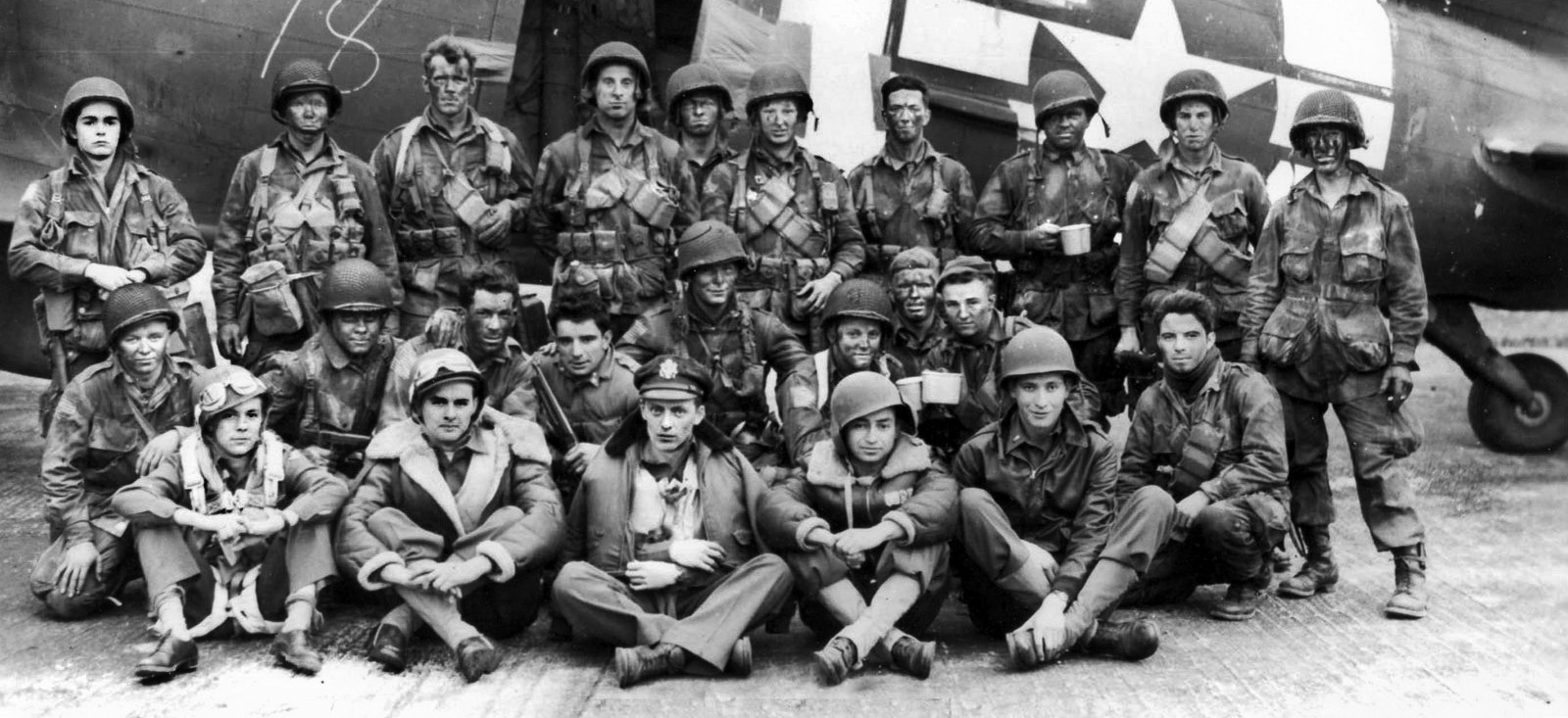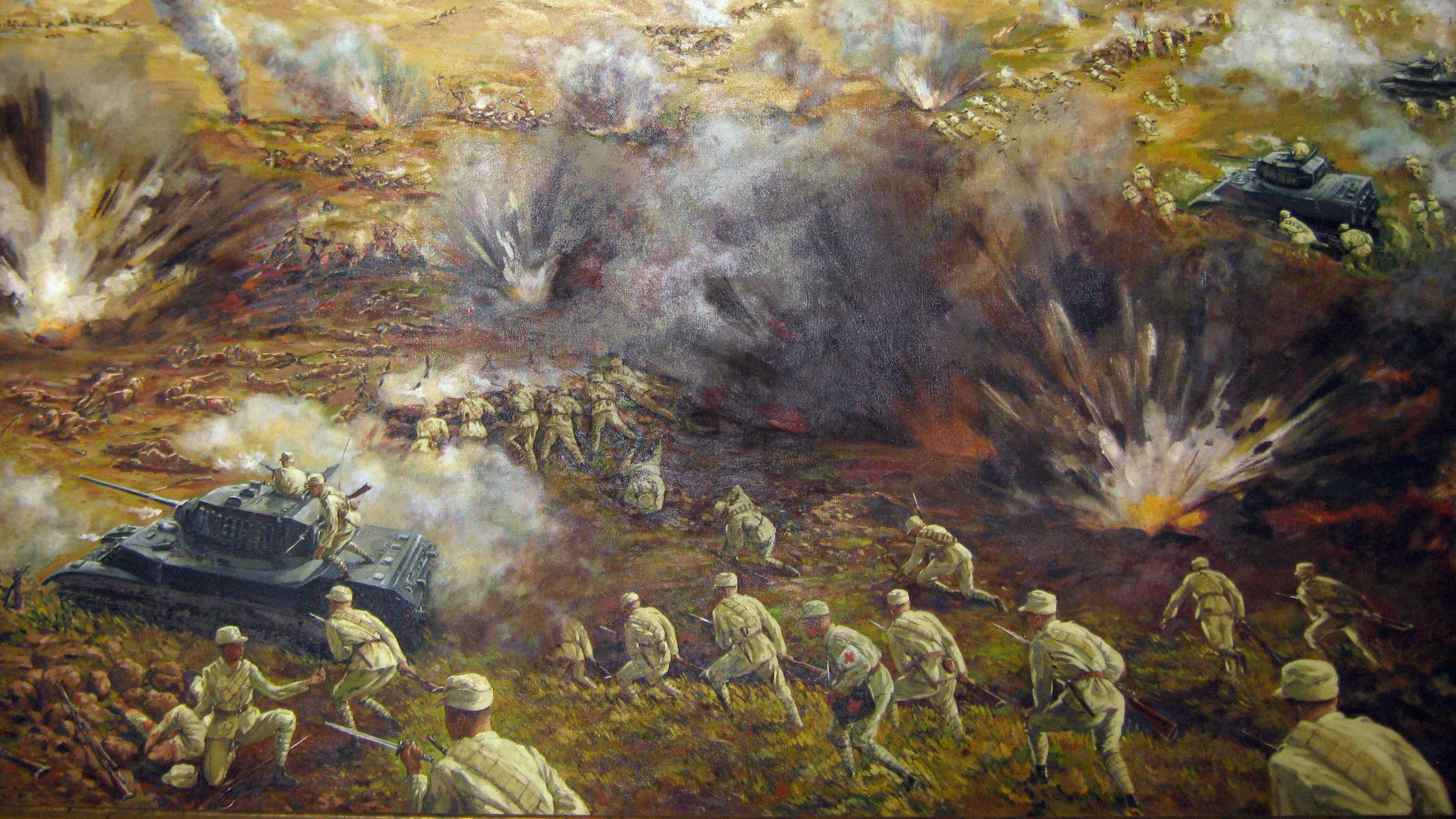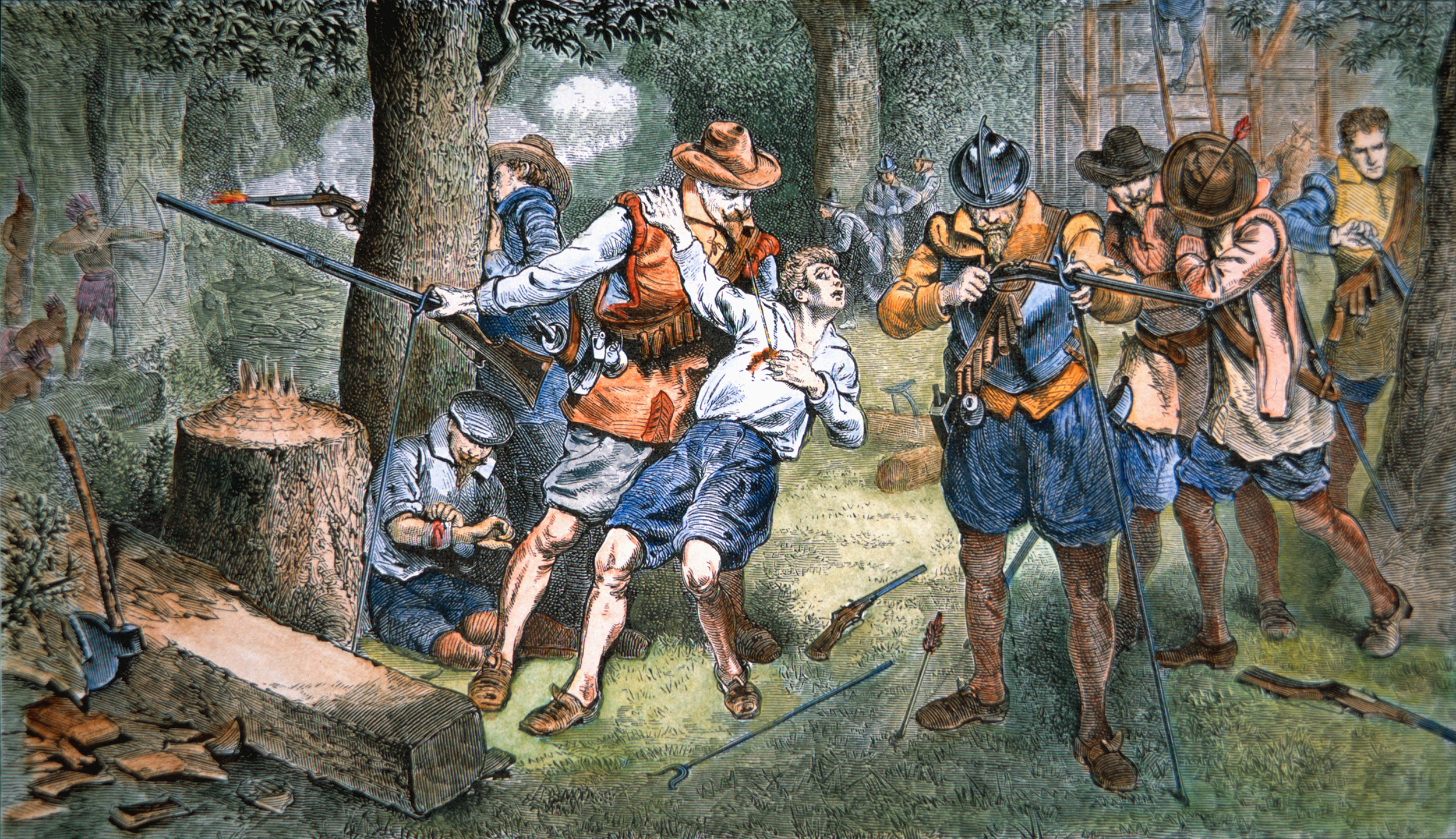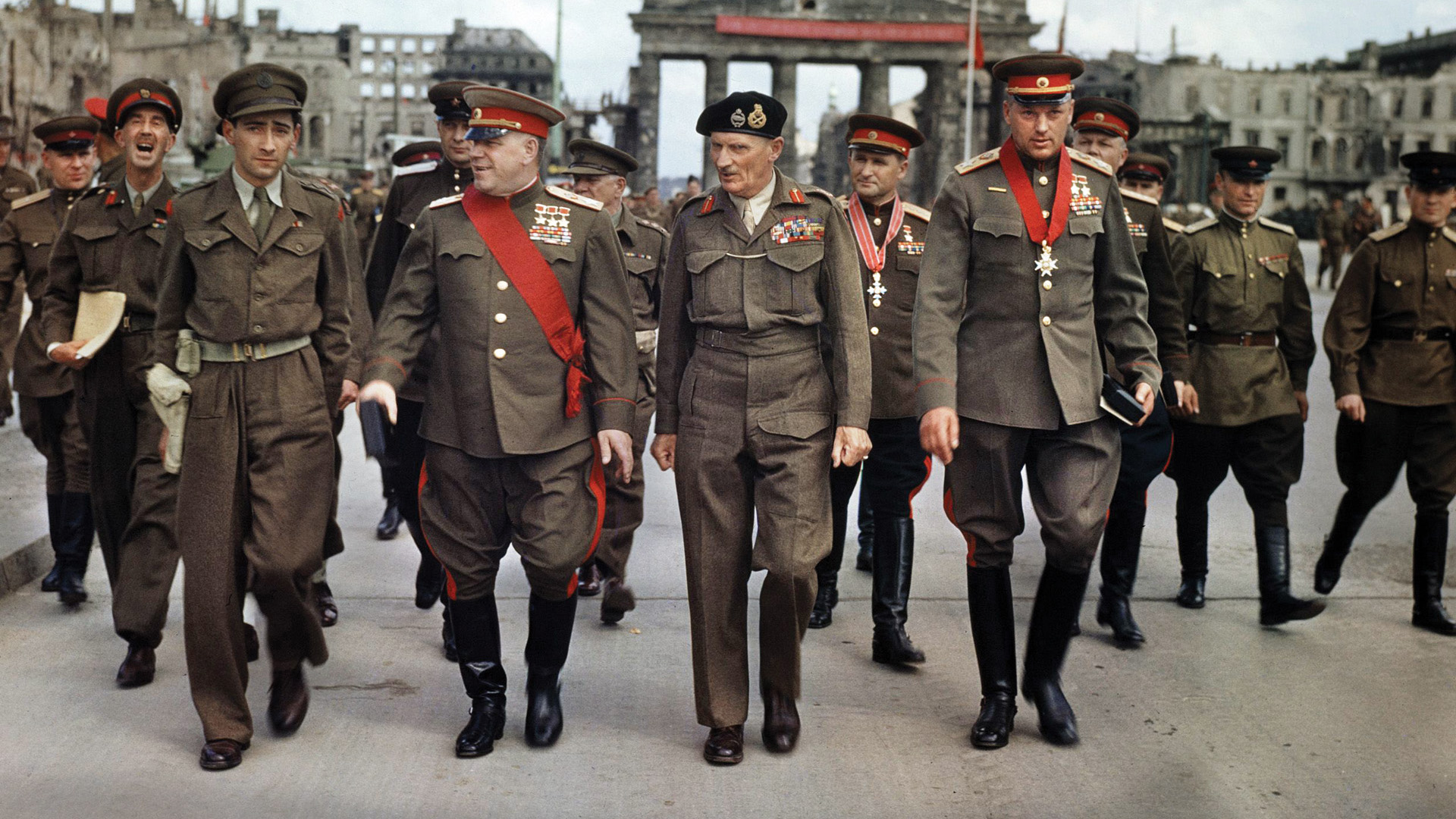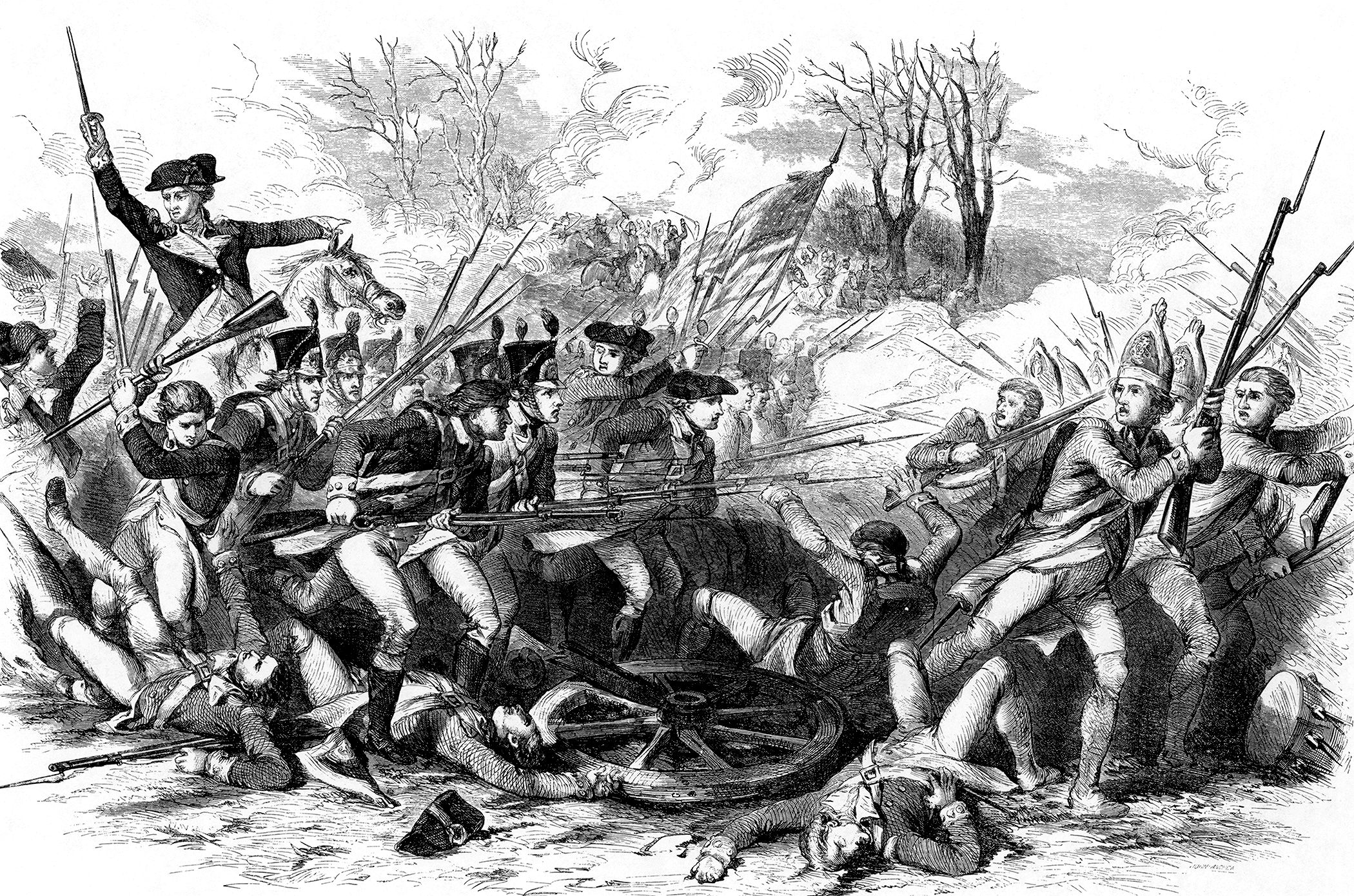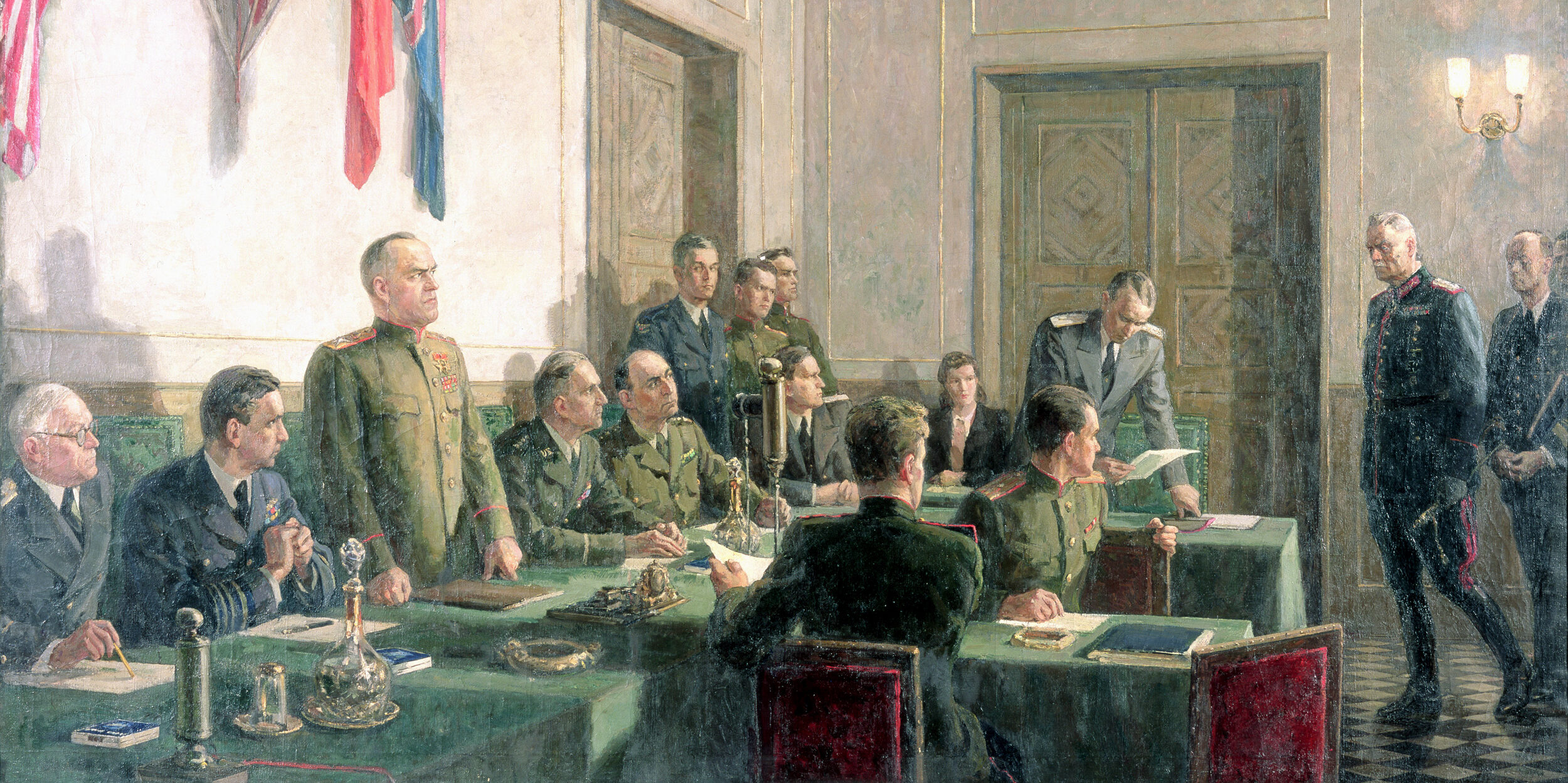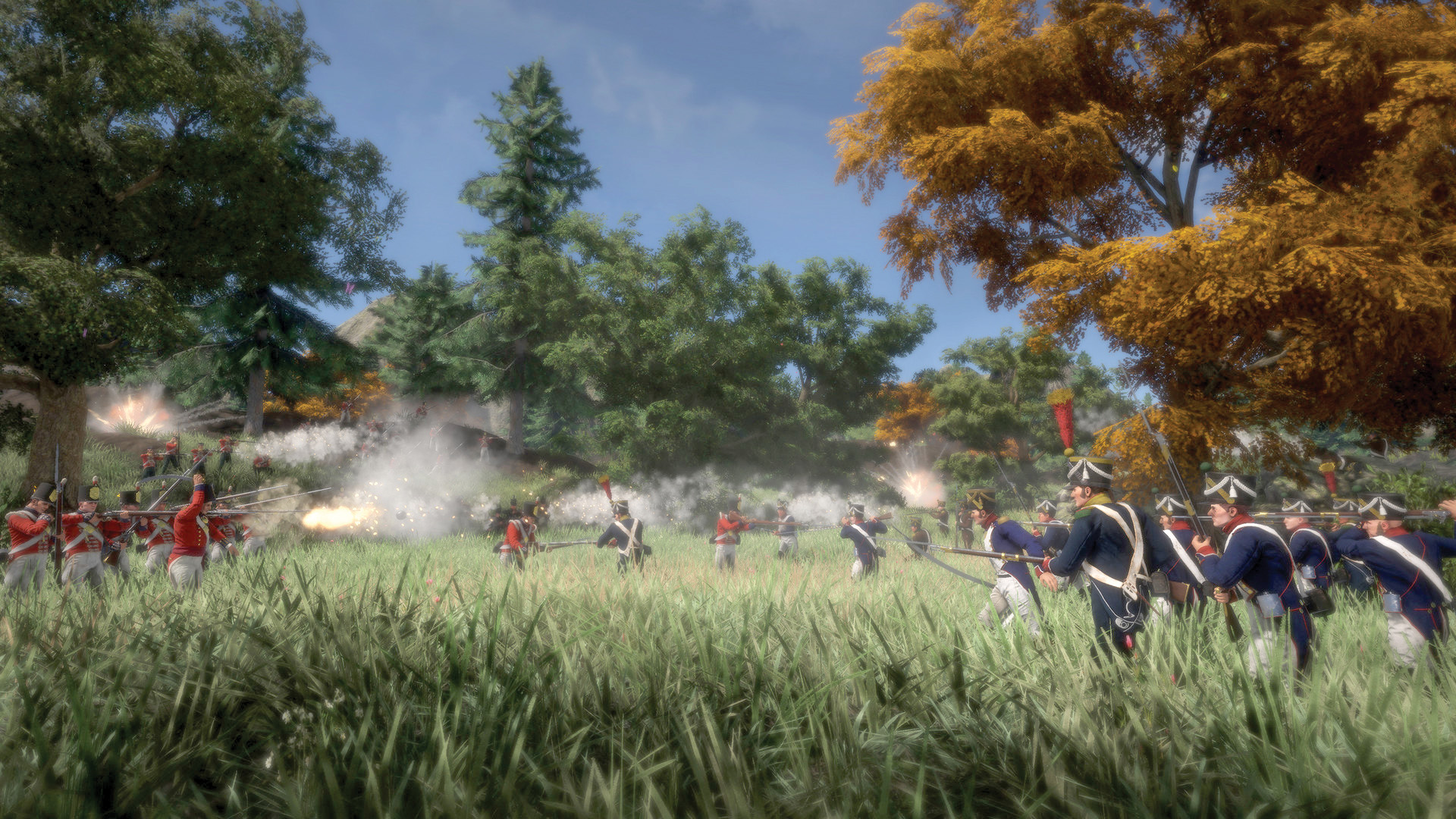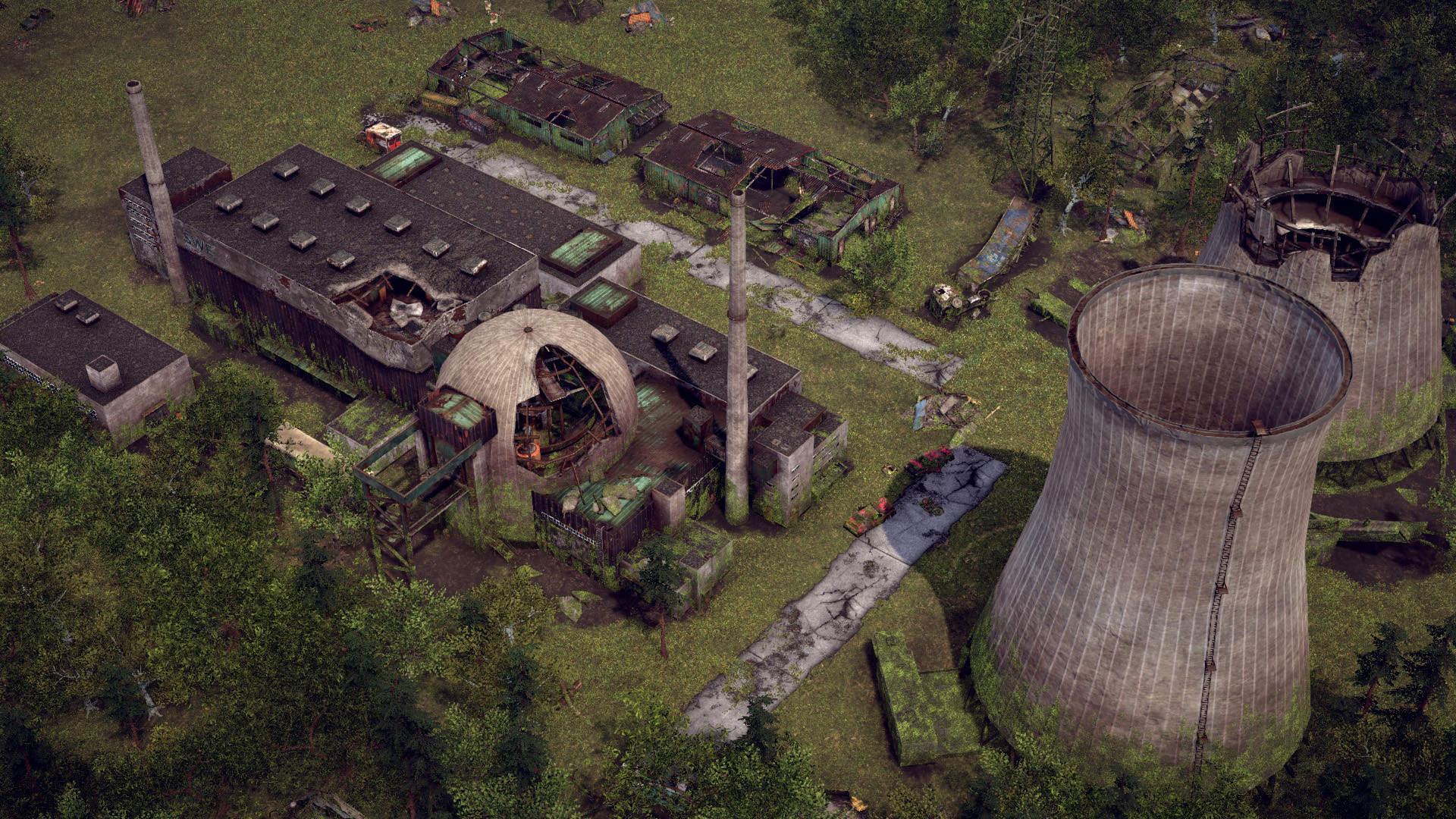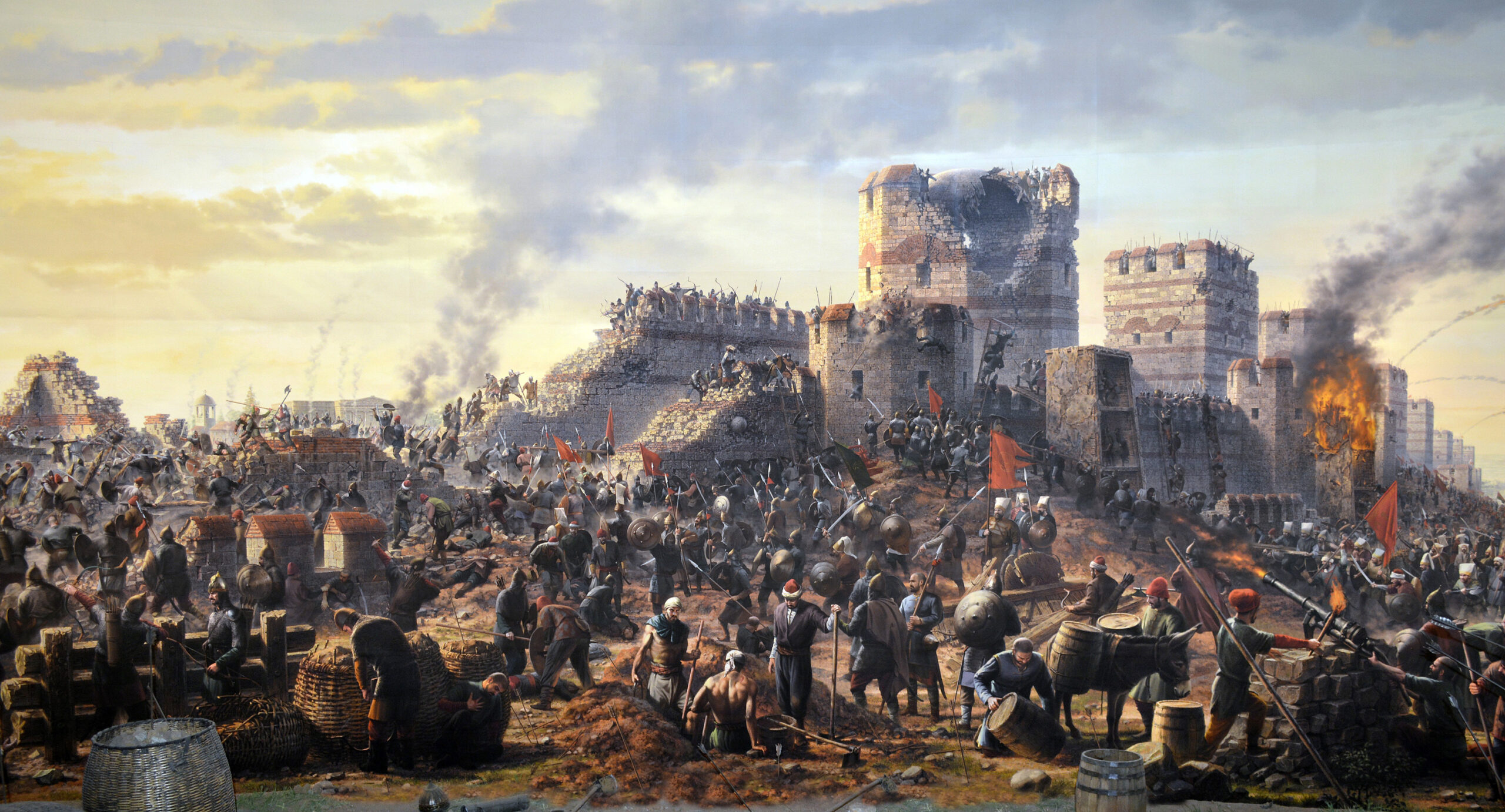By Christopher Miskimon
Captain Frank Lillyman drifted down toward a French field in the predawn darkness of June 6, 1944. Frank was a pathfinder, one of the paratroopers assigned to prepare the way for the main airborne drop on D-Day. That drop was only hours away as Frank watched the ground rush toward him. He touched down and quickly slapped a magazine into his Thompson sub-machine gun. There were shapes moving in the darkness, and he worried they were enemy soldiers, ready to open fire. He pulled out his “cricket,” a small device for telling friend from foe. It made a click-clack noise; if the other person replied with his device, you knew he was friendly. Frank clicked his device but got no reply. As he readied to fire his Thompson, the shadowy figure let out a “moo.” It was a cow.
Moving on, he quickly made contact with seven men from his stick. Though they were a mile from their assigned drop zone, they made plans to set up their guide lights where they were. There was no time to move. Suddenly, a German machine gun opened up from a hedgerow; Frank sent two men to silence it. A few minutes later he heard the crump of a grenade, and the enemy gun went silent. Next, a pair of Germans on bicycles appeared on a nearby road, apparently attracted by the sound of the machine gun. Two more paratroopers strung a wire across the road at neck height, secured to two trees. The bicyclists both hit the wire, almost decapitated as they flipped backward to the ground.
 Frank next spotted a nearby church and made contact with the priest within. Soon they set up their guide lights around the church, lighting them at 12:30 am, only 15 minutes after they hit the ground. It was time to wait for the paratroopers who formed the first wave for the 101st Airborne Division, but there was more work for Frank and his men that night. A scout brought word of a nearby German position containing an antiaircraft gun. It was next to a farmhouse where the German gun crew seemed to be billeted. Frank took two men with him and went to the farmhouse. A Frenchman smoking a pipe stood in the doorway. He jerked his thumb toward the stairs and said, “Boche,” indicating Germans. The Americans crept up the stairs and found a German asleep dressed in white pajamas. They killed him and took a bottle of champagne sitting beside the bed. By 1 am, the first paratroopers appeared overhead.
Frank next spotted a nearby church and made contact with the priest within. Soon they set up their guide lights around the church, lighting them at 12:30 am, only 15 minutes after they hit the ground. It was time to wait for the paratroopers who formed the first wave for the 101st Airborne Division, but there was more work for Frank and his men that night. A scout brought word of a nearby German position containing an antiaircraft gun. It was next to a farmhouse where the German gun crew seemed to be billeted. Frank took two men with him and went to the farmhouse. A Frenchman smoking a pipe stood in the doorway. He jerked his thumb toward the stairs and said, “Boche,” indicating Germans. The Americans crept up the stairs and found a German asleep dressed in white pajamas. They killed him and took a bottle of champagne sitting beside the bed. By 1 am, the first paratroopers appeared overhead.
The success of the D-Day invasion was due to the actions of thousands of individuals acting in concert, following an overall plan toward a common goal. The stories of many of these men are relayed in exciting prose in The First Wave: The D-Day Warriors Who Led the Way to Victory in World War II (Alex Kershaw, Dutton Caliber Publishing, New York, 2019, 368 pp., maps, photographs, notes, bibliography, index, $30.00, hardcover).
The D-Day landings were a pivotal event in the war, and there have been numerous books written on the fighting of June 6, 1944. What makes this book stand out is its focus on the pathfinders, airborne troops, commandos, Rangers, and others who went ashore ahead of the main force. The book focuses on the close combat these soldiers faced as they set up landing lights, captured bridges, destroyed gun emplacements, and then often held them against counterattacks until they were relieved. It is full of stories of fierce actions as Allied soldiers seized the initiative from the occupying German Army.
The author smoothly blends the experiences of a wide variety of D-Day participants into an engaging narrative, describing the chaos of combat and how men overcame difficulty and danger to accomplish their missions and support each other. The book is fast paced, quickly going from soldier to soldier as the various operations they undertook occurred. The author also exposes the ugliness and fear of battle in a way that highlights the dedication of the men involved and their courage under fire. This new book ranks with Kershaw’s other best-selling works on the war and those who fought it.
 Combat Normandy 1944: Hitlerjugend Soldier versus Canadian Soldier (David Greentree, Osprey Publishing, Oxford, UK, 2019, 80 pp., maps, photographs, bibliography, index, $20.00, softcover)
Combat Normandy 1944: Hitlerjugend Soldier versus Canadian Soldier (David Greentree, Osprey Publishing, Oxford, UK, 2019, 80 pp., maps, photographs, bibliography, index, $20.00, softcover)
In June 1944, Canadian troops faced soldiers of the 12th SS Panzer Division Hitlerjugend. These Germans were drawn from the ranks of the Hitler Youth organization. They were inexperienced as soldiers but indoctrinated to be loyal and fervent servants of the Third Reich. The division’s leadership were veteran officers and NCOs; they took these teenage boys and formed them into a fighting force that bitterly resisted the Allied advance. They fought the Canadians several times, most notably at Authie, Bretteville, and Hill 168. A number of Canadian prisoners were massacred by the Hitlerjugend during the fighting, leading to acrimony between two groups already locked in the life or death struggle of combat.
Osprey’s Combat Series compares the training, equipment, weapons, tactics, and organization of famously opposed fighting forces throughout history. In this new edition, the 34th in the series, the author assesses how effective the Canadian Army and Hitlerjugend troops were when pitted against one another, using the three battles mentioned to highlight his conclusions. The narrative is well organized and interesting, looking at the reality on the ground rather than propaganda and myth. The book is also well illustrated with numerous maps, full color original artwork, and a large number of photographs to support the text and give the reader a full appreciation of the covered events.
 This Is Really War: The Incredible True Story of a Navy Nurse POW in the Philippines (Emilie Le Beau Lucchesi, Chicago Review Press, Chicago, 2019, 318 pp., maps, photographs, notes, bibliography, index, $28.99, hardcover)
This Is Really War: The Incredible True Story of a Navy Nurse POW in the Philippines (Emilie Le Beau Lucchesi, Chicago Review Press, Chicago, 2019, 318 pp., maps, photographs, notes, bibliography, index, $28.99, hardcover)
In 1940, Dorothy Still looked forward to her new assignment. A U.S. Navy nurse who joined the service in 1937, by January 1940 she had arrived in the Philippines, ready to work at the hospital on the Cavite Naval Base. At first the posting was a pleasure; Dorothy attended dances, dated sailors, and enjoyed herself when off duty. By 1941, however, war clouds began to loom. Dependents and families went back to the States, and the sailors drilled and trained. Soon the war started, and she became a prisoner of the Japanese. Despite maltreatment and malnourishment, she and the other captive nurses strived to maintain their military discipline and humanity. In mid-1943, the nurses were transferred to a new camp in the countryside named Los Baños. Most of the inmates were civilians, and Dorothy did her best to help them until the camp was liberated in 1945 during a daring airborne operation.
The plight of nurses and civilians trapped in the Philippines during World War II is seen through this new biography of one of those nurses thrust into the horror of the Japanese POW camps. It reveals how they rose to the challenge of survival and endured hardships most Americans cannot imagine today. This well-written book is full of engaging personal stories that maintain the reader’s interest.
 Katusha, Girl Soldier of the Great Patriotic War (Wayne Vansant, Dead Reckoning/ Naval Institute Press, Annapolis, MD, 2019, 572 pp., illustrations, $36.00, softcover)
Katusha, Girl Soldier of the Great Patriotic War (Wayne Vansant, Dead Reckoning/ Naval Institute Press, Annapolis, MD, 2019, 572 pp., illustrations, $36.00, softcover)
Ekaterina Tymoshenko, nicknamed “Katusha,” was a Ukrainian teenager when World War II came to the Soviet Union on June 22, 1941. Like many of her countrymen, she thought the Germans might liberate them from the scourge of Stalin and communism. Soon she discovered they were even worse. As friends and family around her were killed or taken away as slave laborers in the Reich, Katusha joined her uncle as a partisan, conducting hit and run raids against the Nazis. By the end of 1942, she joined the Red Army, which trained her as a tank crewman. Combat followed, at Stalingrad and later at Kursk, where she took part in tank battles against the toughest and best the Germans had. Along the way she lost comrades, found new friends, and learned that she was fighting the brutal fascists on behalf of the equally brutal Bolsheviks. Nevertheless, the Nazis were the invaders and had to be defeated first. Katusha saw the war through to its bloody end in Berlin.
A new wave of World War II comics and graphic novels has arisen lately, and this is one of the best examples. The author gives great attention to detail and strives for accuracy in his historical facts. Instead of playing loose with the history to make a more dramatic story, here the history is kept accurate and the characters fit into the momentous events around them. The artwork is also authentic, with uniforms, weapons, and equipment drawn accurately. This work is equally well suited to either adult or young adult readers.
 Blood, Oil and the Axis: The Allied Resistance Against a Fascist State in Iraq and the Levantine, 1941 (John Broich, Abrams Press, New York, 2019, 368 pp., maps, photographs, notes, bibliography, index, $35.00, hardcover)
Blood, Oil and the Axis: The Allied Resistance Against a Fascist State in Iraq and the Levantine, 1941 (John Broich, Abrams Press, New York, 2019, 368 pp., maps, photographs, notes, bibliography, index, $35.00, hardcover)
The fighting in North Africa was not Great Britain’s only problem in the Middle East in the spring of 1941. A group of pro-Axis Iraqi officers offered to make their nation’s oil available to the Third Reich in exchange for assistance throwing out the British. At the same time in Syria the Vichy French occupiers there agreed to provide airfields and refueling for German aircraft supporting the Iraqis’ attempt at revolt. Britain’s Middle East Command scrambled to assemble a scratch force of ground and air assets to defeat this new threat. Troops from India and Jordan joined a small number of British soldiers, and together they marched against the revolt with the support of a handful of aircraft, many of them obsolete trainers. Also involved were groups of Jewish Palestinians, Australians, and Free French, making the expedition truly international.
The Iraqi Revolt of 1941—a lesser known episode of World War II—is revealed in great detail in this new work. The author is an authority on British history and successfully makes this work more than just a dry retelling of a campaign. The narrative is full of first-person accounts by participants at all levels, making the book engaging to read. Emphasis is placed on recognizing the truly international and multiethnic flavor of the campaign.
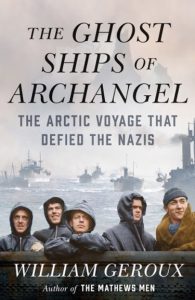 The Ghost Ships of Archangel: The Arctic Voyage That Defied the Nazis (William Geroux, Viking Press, New York, 2019, 337 pp., maps, photographs, notes, bibliography, index, $28.00, hardcover)
The Ghost Ships of Archangel: The Arctic Voyage That Defied the Nazis (William Geroux, Viking Press, New York, 2019, 337 pp., maps, photographs, notes, bibliography, index, $28.00, hardcover)
Of all the convoys that plied the northern route to the Soviet Union during World War II, the one designated PQ-17 is the most famous due to the disaster that befell it. In July 1942, PQ-17, carrying $1 billion worth of war material, came under Nazi attack, and the individual ships received the order to scatter. The idea was to make the ships harder for the Germans to find and attack, but the loss of cohesion only made it easier for them to be singled out and targeted. Four ships broke off from the convoy and sailed farther north, hoping to hide among the ice floes. It was the height of the arctic summer, so there was constant daylight to help guide German planes, submarines, and surface ships, including the infamous battleship Tirpitz. These four vessels dodged both ice and submarines on their way to the Soviet Union.
The ordeal of PQ-17 is well known but usually only in terms of ships and cargo lost. This book puts a human face on the events, enlightening the reader about the service, dedication, and sacrifices of the U.S. Merchant Marine during World War II. These men were reinforced with U.S. Navy and Royal Navy reservists, who are also highlighted in this book. The work is well written and interesting, with many personal accounts of the men who survived the destruction of PQ-17 and arrived at their destination.
 Countdown to D-Day, the German Perspective: The German High Command in Occupied France, 1944 (Peter Margaritis, Casemate Publishers, Havertown, PA, 2019, 607 pp., maps, photographs, notes, appendices, bibliography, $34.95, hardcover)
Countdown to D-Day, the German Perspective: The German High Command in Occupied France, 1944 (Peter Margaritis, Casemate Publishers, Havertown, PA, 2019, 607 pp., maps, photographs, notes, appendices, bibliography, $34.95, hardcover)
Field Marshal Erwin Rommel was appointed the General Inspector of the Atlantic Wall defenses, designed to repel the inevitable Allied invasion. What he found shocked him. The wall was woefully inadequate and preparations sorely lacking. He tried to work with the theater commander, Field Marshal Gerd von Rundstedt, but the man seemed more interested in living comfortably in Paris and awaiting eventual defeat. In Normandy, General Erich Marcks tried to follow Rommel’s directives but lacked the men and material to do so. He believed the invasion would come in his sector, but no one else did. Other German leaders made their own desperate plans while subject to the whims of a leader who no longer seemed connected to reality. Still, they soldiered on, doing their duty as best they could.
The critical period of December 1943 to June 1944 is the subject of this new work. The book takes a chapter for each month in between and gives a day by day account of what the German high command was doing to get ready for the beginning of the end of their Reich. The detail is impressive, and there are two high-quality photographic inserts. There are extensive endnotes to back up the author’s conclusions, making this book a handy reference for students of the Normandy Campaign.
 Soaring to Glory: A Tuskegee Airman’s Firsthand Account of World War II (Philip Handleman with Lt. Col. Harry T. Stewart Jr., Regnery History, Washington, D.C., 2019, 230pp., photographs, index, $29.99, hardcover)
Soaring to Glory: A Tuskegee Airman’s Firsthand Account of World War II (Philip Handleman with Lt. Col. Harry T. Stewart Jr., Regnery History, Washington, D.C., 2019, 230pp., photographs, index, $29.99, hardcover)
The now famous Tuskegee Airmen fought two wars simultaneously. The first was against Nazi Germany, taking the fight to the skies over Europe. The second was against the institutionalized racism that nearly prevented them from flying in the first place. Harry Stewart flew with the 332nd Fighter Group, popularly known as the Red Tails. He joined the unit in early 1945 and flew 43 combat missions, including one in which he downed three German planes. Harry was awarded a Distinguished Flying Cross for his service and after the war became a flight instructor back at Tuskegee. Continuing his service allowed him to be present as the new United States Air Force desegregated and the slow march of civil rights began in earnest. Harry retired as a lieutenant colonel.
This memoir relays the twin stories of wartime and prejudice, revealing how the young African American men of the Tuskegee Airmen suffered, persevered, and ultimately triumphed over multiple adversities. The author is a noted aviation historian with almost two dozen related books to his credit. His cooperation with Lt. Col. Stewart resulted in a very readable book, with prose that keeps the reader’s interest page after page. It effectively relates the subject’s experiences to the wider events of the war and society at the time.
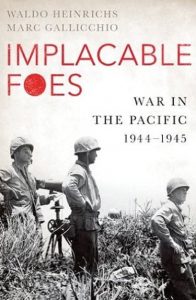 Implacable Foes: War in the Pacific 1944-1945 (Waldo Heinrichs and Marc Gallicchio, Oxford University Press, Oxford, UK, 2019, 728 pp., maps, photographs, notes, bibliography, index, $24.95, softcover)
Implacable Foes: War in the Pacific 1944-1945 (Waldo Heinrichs and Marc Gallicchio, Oxford University Press, Oxford, UK, 2019, 728 pp., maps, photographs, notes, bibliography, index, $24.95, softcover)
By 1944 it was clear that Imperial Japan was losing World War II in the Pacific. The United States and its allies were slowly but inexorably advancing across the broad front of the Pacific Ocean on the water and on the numerous islands vital to the combatants’ plans and aims. With surrender an unthinkable option, the Japanese engaged in increasingly desperate defensive actions in the hope of exhausting their opponents and making the price of victory high enough to ensure a negotiated peace. Such a peace was unacceptable to the Allies, so a grueling war of attrition took place, causing horrible casualties and heated political debates and ensuring the human cost would be staggeringly brutal. The dropping of the atomic bombs in August 1945 finally ended the conflict and confirmed the butcher’s bill.
This new history of the Pacific War’s last two years is written by two eminent scholars, one a veteran of World War II whose unit redeployed to the Pacific for the aborted invasion of Japan. They look at the fighting from the points of view of soldiers on the ground up to the politicians and high-ranking military officers making the decisions of grand strategy. The book is well researched and successfully relates how war is a human effort even at the highest levels of leadership, requiring perseverance and courage to be brought to a conclusion.
New and Noteworthy
 Three Days at the Brink: FDR’s Daring Gamble to Win World War II (Bret Baier, William Morrow, 2019, $28.99, hardcover) This is a reappraisal of the 1943 Tehran Conference. The author argues it was more important than the later meetings that overshadow it.
Three Days at the Brink: FDR’s Daring Gamble to Win World War II (Bret Baier, William Morrow, 2019, $28.99, hardcover) This is a reappraisal of the 1943 Tehran Conference. The author argues it was more important than the later meetings that overshadow it.
The Men Who Killed the Luftwaffe: The U.S. Army Air Forces Against Germany in World War II (Jay A. Stout, Stackpole Books, 2019, $24.95, softcover) The Air Corps went from a force barely able to defend the country to a world-spanning war winner in just a few years. This new work reveals the men who made that happen.
Japan Triumphant: The Far East Campaign 1941-1942 (Philip Jowett, Pen and Sword Books, 2019, $24.95, softcover) Imperial Japan had a short time to run rampant across the Asia-Pacific region. This photo book documents that period with more than 200 images.
Hitler: A Global Biography (Brendan Simms, Basic Books, 2019, $40.00, hardcover) This biography takes a new look at Hitler and his fear of the United States as an enemy.
The Undercover Nazi Hunter: Exposing Subterfuge and Unmasking Evil in Post-War Germany (Wolfe Frank, Frontline Books, 2019, $39.95, hardcover) Wolfe Frank was an anti-Nazi who fled Germany before the war. He later worked as a translator at the Nuremburg Trials and did undercover reporting in Germany after the war.
 Tempest V vs Fw 190D-9: 1944-45 (Robert Forsyth, Osprey Books, 2019, $22.00, softcover) These late war fighter aircraft ranked among the best piston-engine planes of the war. This book covers their design history, combat performance, and the pilots who flew them.
Tempest V vs Fw 190D-9: 1944-45 (Robert Forsyth, Osprey Books, 2019, $22.00, softcover) These late war fighter aircraft ranked among the best piston-engine planes of the war. This book covers their design history, combat performance, and the pilots who flew them.
German Submarine U-1105 ‘Black Panther:” The Naval Archaeology of a U-Boat (Aaron Stephan Hamilton, Osprey Publishing, 2019, $35.00, hardcover) U-1105 was a late-war submarine equipped with many newly developed technical innovations. Sunk in the Potomac River postwar, it was rediscovered and researched.
Spies, Lies and Disguise: The Daring Tricks and Deeds That Won World War II (Jennifer Swanson, Bloomsbury, 2019, $21.99, hardcover) This children’s book teaches the reader about the unconventional operations and tricks that occurred during the war.
Stug III and IV: German Army, Waffen-SS and Luftwaffe, Western Front 1944-1945 (Dennis Oliver, Pen and Sword Books, 2019, $22.95, softcover) The Sturmgeschutz self-propelled gun was one of the backbone vehicles of the German military. This book describes their history and discusses building scale models of them.
Atlas of the Blitzkrieg 1939-41 (Robert Kirchubel, Osprey Books, 2019, $60.00, hardcover) This high-quality, coffee table book combines excellent maps from the invasions of Poland through Greece and Yugoslavia. Descriptive text accompanies the maps.
